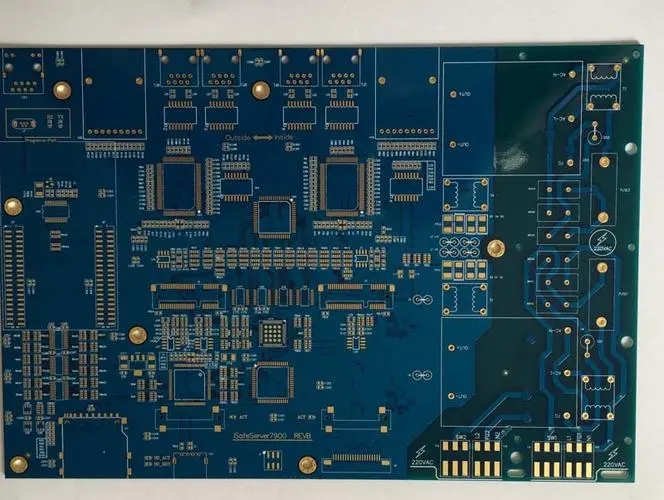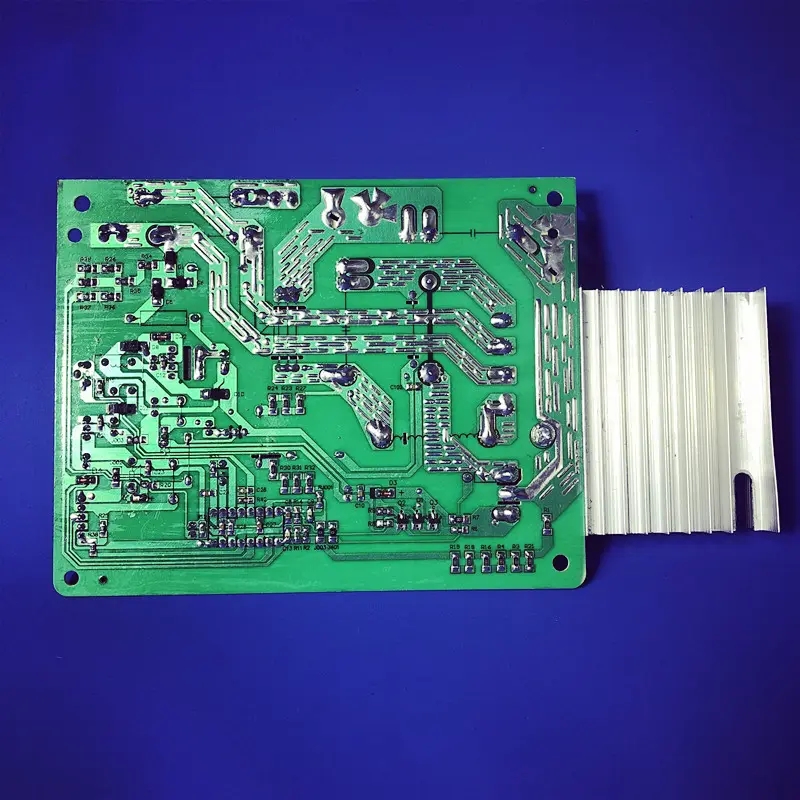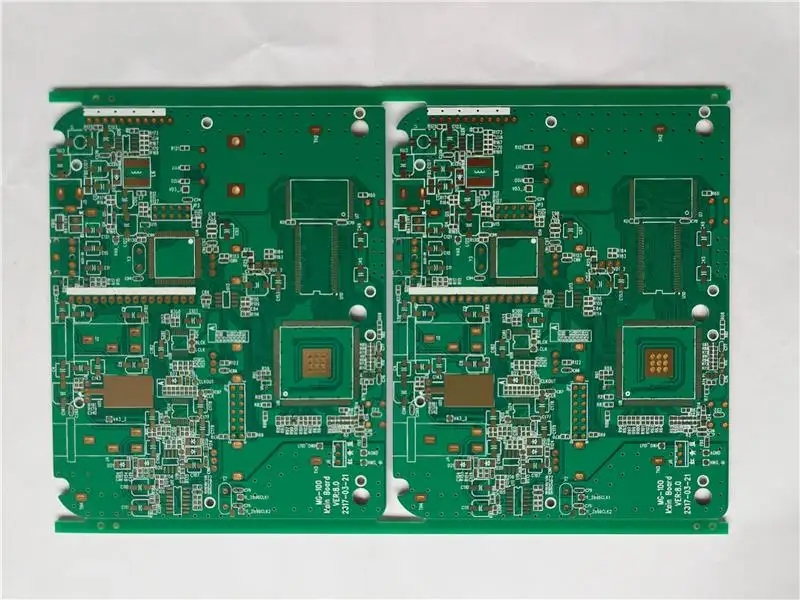
PCB Layout and Routing Skills in RF Circuit Board Zoning Design
PCB manufacturers, PCB designers and PCBA manufacturers explain PCB layout and wiring skills in RF circuit board zoning design
Today's cellular phone design integrates everything in a variety of ways, which is detrimental to RF circuit board design. Now the competition in the industry is very fierce, and everyone is looking for ways to integrate the most functions with the smallest size and the smallest cost. Analog, digital and RF circuits are all tightly packed together. The space used to separate their problem areas is very small. In addition, considering the cost, the number of circuit board layers is often reduced to the minimum.
It is amazing that the multi-purpose chip can integrate multiple functions on a very small bare chip, and the pins connected to the outside are arranged very closely. Therefore, RF, IF, analog and digital signals are very close, but they are usually electrically independent. Power distribution may be a nightmare for designers. In order to prolong the battery life, different parts of the circuit work in time according to needs and are controlled by software. This means that you may need to provide five to six working power supplies for your cellular phone.
When designing RF layout, several general principles must be satisfied first:
Isolate the high power RF amplifier (HPA) and low noise amplifier (LNA) as much as possible. In a word, keep the high power RF transmitting circuit away from the low power RF receiving circuit. If there is a lot of physical space on your PCB, you can easily do this, but usually there are many components and PCB space is small, so this is usually impossible. You can put them on both sides of the PCB, or let them work alternately instead of simultaneously. High power circuits can sometimes include RF buffers and voltage controlled oscillators (VCOs).
Make sure that the high power area on the PCB has at least one whole ground. It is better to have no via on it. Of course, the more copper sheets, the better. Later, we will discuss how to break this design principle as needed and how to avoid the problems that may arise from it.
Decoupling the chip and the power supply is also extremely important, and several ways to implement this principle will be discussed later.
RF output usually needs to be far away from RF input, which will be discussed in detail later.
Sensitive analog signals should be as far away from high-speed digital signals and RF signals as possible.
How to partition?
Design zones can be decomposed into physical and electrical zones. Physical zoning mainly involves the layout, orientation and shielding of components; The electrical partition can be further divided into power distribution, RF wiring, sensitive circuits and signals, and grounding partitions.
First, we will discuss the physical partition problem. Component layout is the key to an excellent RF design. The most effective technology is to first fix the components on the RF path, and adjust their orientation to minimize the length of the RF path, keep the input away from the output, and separate the high power circuit and low power circuit as far as possible.
The most effective circuit board stacking method is to arrange the main ground (main ground) on the second layer below the surface layer, and try to lay the RF line on the surface layer. Minimizing the size of vias on the RF path can not only reduce the path inductance, but also reduce the number of solder joints on the main ground, and reduce the chance of RF energy leakage to other areas in the laminate.
In physical space, linear circuits such as multistage amplifiers are usually sufficient to isolate multiple RF regions from each other, but duplexers, mixers, and IF amplifiers/mixers always have multiple RF/IF signals interfering with each other, so care must be taken to minimize this impact. The RF and IF wiring shall be crossed as far as possible and separated from each other by a piece of land as far as possible. The correct RF path is very important for the performance of the whole PCB, which is why component layout usually takes up most of the time in the design of cellular telephone PCB.

On the cellular telephone PCB board, it is usually possible to place the low-noise amplifier circuit on one side of the PCB board and the high-power amplifier on the other side, and finally connect them on the same side to the antenna at the RF end and the baseband processor end through the duplexer. Some techniques are required to ensure that the through vias do not transfer RF energy from one side of the board to the other. The common technique is to use blind holes on both sides. The adverse effects of the through vias can be minimized by arranging them in the area where both sides of the PCB are free from RF interference.
Sometimes it is not possible to ensure sufficient isolation between multiple circuit blocks. In this case, it is necessary to consider the use of metal shielding to shield RF energy in the RF area. However, metal shielding also has problems, such as its own costs and assembly costs are expensive;
It is difficult to ensure high precision when manufacturing metal shielding covers with irregular shape, while rectangular or square metal shielding covers restrict the layout of components; The metal shielding cover is not conducive to component replacement and fault location; Since the metal shield must be welded to the ground and must keep a proper distance from the components, it needs to occupy valuable PCB space.
It is very important to ensure the integrity of the shield as much as possible. The digital signal line entering the metal shield should go through the inner layer as much as possible, and the PCB below the line layer should be the layer. RF signal lines can go out from the small gap at the bottom of the metal shield and the wiring layer at the ground gap, but more ground should be laid around the gap as much as possible, and the ground on different layers can be connected together through multiple vias.
Despite the above problems, metal shield is very effective and often the only solution to isolate critical circuits.
In addition, proper and effective chip power decoupling is also very important. Many RF chips integrated with linear circuits are very sensitive to power supply noise. Generally, each chip needs to use up to four capacitors and an isolation inductor to ensure filtering out all power supply noise).
The minimum capacitance value usually depends on its self resonant frequency and low pin inductance, and the value of C4 is selected accordingly. The values of C3 and C2 are relatively large due to the inductance of their own pins, so the RF decoupling effect is poor, but they are more suitable for filtering noise signals with lower frequencies. The inductor L1 prevents RF signals from being coupled to the chip from the power line. Remember that all cabling is a potential antenna that can both receive and transmit RF signals. In addition, it is also necessary to isolate the induced RF signals from key lines.
The physical location of these decoupling elements is also critical. The layout principle of these important elements is: C4 should be as close to the IC pin as possible and grounded, C3 must be the closest to C4, C2 must be the closest to C3, and the connection route between IC pin and C4 should be as short as possible. The grounding terminals of these elements (especially C4) should usually be connected to the chip's grounding pin through the next layer. The vias connecting the components to the stratum should be as close to the component pads on the PCB as possible. It is better to use the blind holes punched on the pads to minimize the inductance of the connecting lines. The inductance should be close to C1.
An integrated circuit or amplifier often has an open drain output, so a pull-up inductor is required to provide a high impedance RF load and a low impedance DC power supply. The same principle applies to decoupling the power supply at this inductor end. Some chips require multiple power supplies to work, so you may need two or three sets of capacitors and inductors to decouple them. If there is not enough space around the chip, you may encounter some problems.
Remember that inductors are rarely placed together in parallel, because this will form an air core transformer and mutual induction will generate interference signals, so the distance between them should be at least equal to the height of one of the devices, or arranged at right angles to minimize their mutual inductance.
The principle of electrical zoning is basically the same as that of physical zoning, but it also includes some other factors. Some parts of modern cellular phones use different working voltages and are controlled by software to extend the battery life. This means that cellular phones need to run multiple power supplies, which creates more problems for isolation. The power supply is usually introduced from the connector, and is immediately decoupled to filter out any noise from outside the circuit board, and then distributed after passing through a group of switches or regulators.
All VCO design principles also apply to resonant circuits. Resonant circuits are usually very sensitive to noise because they contain a large number of components, have a wide distribution area on the board, and usually operate at a very high RF frequency. The signals are usually arranged on the adjacent pins of the chip, but these signal pins need to work with relatively large inductors and capacitors, which in turn requires that these inductors and capacitors must be close together and connected back to a noise sensitive control loop. It is not easy to do this.
Automatic gain control (AGC) amplifier is also a problem prone place, no matter the transmitting or receiving circuit will have AGC amplifier. Generally, AGC amplifiers can effectively filter out noise. However, because cellular phones have the ability to handle the rapid changes in the strength of transmitted and received signals, AGC circuits are required to have a fairly wide bandwidth, which makes it easy for AGC amplifiers on some key circuits to introduce noise.
The design of AGC circuit must comply with good analog circuit design technology, which is related to the short input pin of the op amp and the short feedback path, both of which must be far away from RF, IF or high-speed digital signal wiring. Similarly, a good grounding is also essential, and the power supply of the chip must be well decoupled. If it is necessary to run a long line at the input or output end, it is better to run it at the output end. Usually, the impedance of the output end is much lower, and it is not easy to induce noise. Generally, the higher the signal level, the easier it is to introduce noise into other circuits.
In all PCB designs, it is a general principle to keep digital circuits away from analog circuits as much as possible, which is also applicable to RFPCB design. The common analog ground and the ground used to shield and separate signal lines are usually equally important. The problem is that if you do not foresee and plan carefully in advance, you can do very little in this regard each time. Therefore, in the early stage of design, careful planning, well considered component layout and thorough layout evaluation are very important. Design changes caused by negligence may lead to a design that is about to be completed and must be pushed back again. This serious consequence caused by negligence is not a good thing for your personal career development in any case.
RF lines should also be kept away from analog lines and some very important digital signals. All RF wiring, pads and components should be filled with copper grounding shields as much as possible and connected to the main ground as much as possible. Micro vias like breadboard are very useful in the RF circuit development stage. If you choose a construction board, you can use many vias at will without spending any money. Otherwise, drilling holes on ordinary PCB will increase the development cost, which will increase the cost in mass production.
If the RF wiring must pass through the signal wire, try to lay a layer of ground connected to the main ground along the RF wiring between them. If it is not possible, make sure they are crisscross, which can minimize capacitive coupling. At the same time, try to lay more ground around each RF cable and connect them to the main ground. In addition, the inductive coupling can be minimized by minimizing the distance between parallel RF routes.
When a solid whole ground is directly placed on the first layer below the surface, the isolation effect is the best, although other methods can also be used when designing with care. I have tried to divide the ground plane into several blocks to isolate analog, digital and RF lines, but I have never been satisfied with the results, because eventually there are always some high-speed signal lines going through these separate grounds, which is not a good thing.
Each layer of PCB shall be laid with as many floors as possible and connected to the main floor. Keep the routing together as much as possible to increase the number of plots in the internal signal layer and power distribution layer, and adjust the routing appropriately so that you can arrange the ground connection vias to the isolated plots on the surface. The generation of free ground on each PCB layer should be avoided, because they will pick up or inject noise like a small antenna. In most cases, if you can't connect them to the main site, you'd better remove them. PCB manufacturers, PCB designers and PCBA manufacturers will explain PCB layout and wiring skills in RF circuit board zoning design.







